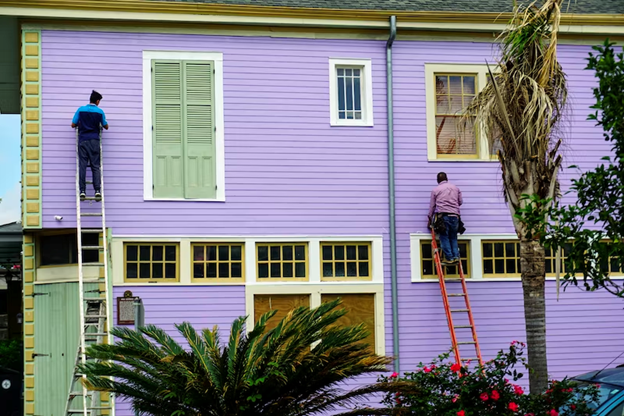Selecting the right siding for your home is a critical decision for homeowners. It impacts the aesthetics, durability, and value of their property. With different materials available, each offering unique benefits and styles, choosing can be overwhelming.
Why Add a Siding for Your Home
Adding siding to your home is a strategic decision beyond mere aesthetics. While it’s true that siding can significantly enhance your house’s curb appeal, its benefits are more than that.
Siding acts as the first line of defense against various weather conditions. High-quality siding materials can withstand these elements. They are great for ensuring the structural integrity of your home remains.
For any homeowner, moisture in the home can be a source of headaches. Sidings can be a solution by preventing moisture from seeping into the walls. Moisture ingress can lead to severe problems like mold growth and structural damage.
Additionally, properly installed siding can seal off gaps where air might escape or enter your home. This sealing effect contributes to better thermal regulation. As a result, you’ll likely see a reduction in your energy bills.
With these benefits, you may want to consider siding installation. Before you do, know the different siding materials you can choose from.
Types of Siding Materials
Each siding material brings its own set of characteristics, from aesthetic qualities to maintenance needs. Here are five siding materials for your consideration:
1. Vinyl Siding
Vinyl siding is renowned for its cost-effectiveness and low maintenance. It doesn’t require painting and is moisture-resistant. They are also available in a diverse range of colors and textures.
However, it may not be the best choice for extreme weather conditions, as it can become brittle and crack in cold temperatures or warp in extreme heat.
2. Wood Siding
Wood siding offers unparalleled natural beauty and can significantly enhance a home’s charm. It’s highly customizable, can be painted or stained in any color, and provides good insulation. They’re not perfect, though. The main drawbacks are its maintenance requirements, including regular painting or staining, and its vulnerability to insects and rot if not properly maintained.
3. Fiber Cement Siding
This composite material offers the look of wood, stucco, or masonry but with greater durability. It’s an excellent choice for homeowners looking for a low-maintenance, long-lasting material.
Before you commit, know that it can be more expensive upfront and requires professional installation. However, its resilience to termites, fire, and rot makes it a cost-effective choice in the long run.
4. Aluminum Siding
Aluminum siding stands out for its durability, fire, rust, and corrosion resistance. It’s also lightweight, making it easier to install than other options. Since it’s recyclable, they’re eco-friendly.
However, its susceptibility to dents and fading might not be the best choice for areas prone to severe weather or where aesthetic appearance is a high priority.
5. Stone and Stone Veneer Siding
Stone siding provides a luxurious, high-end look and unmatched longevity. Stone veneer offers a similar aesthetic at a more affordable price. Both are excellent for adding an element of natural beauty and are incredibly durable, though they require a significant investment in materials and installation.


